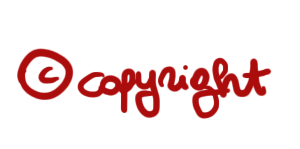This 1-minute guide (briefly) explores the areas of Internet copyright, Creative Commons, and ‘fair use’ for teachers. It follows on from my previous post – The 1-minute guide to plagiarism.
- Copyright and the Internet
Contrary to what many of us may think – and the way many of our students may behave – you can’t just use anything you find on the Internet in any way you like. Take the example of online images. Although you may be able to freely use and share some images, others are copyrighted, and you need to get explicit permission from the creators (and in some cases pay something) to use them. If you go ahead and use these copyrighted images without doing so, you are technically infringing the law. And of course it’s not just images. This applies to all online media – documents and texts, images and photos, music and videos.
- What can – and can’t – legally be used
Copyrighted work often has a © symbol or the words ‘copyright by’, to show that you cannot simply do what you like with it. This may sound scary and off-putting, but there is some good news for educators. Many works on the Internet have ‘Creative Commons’ licenses. Creative Commons is a movement that enables creators to apply different kinds of licenses to their work, allowing them to be distributed or freely shared for non-commercial purposes, adapted or remixed, or used only in their original version. Most creators like to have their work attributed to them, so this is usually a part of a Creative Commons license. See the Creative Commons website to explore the main types of license currently in use, and the logos used to identify each.
- Finding material with a Creative Commons license
Imagine you’re looking for an image to use with a class. If you use Google Image search, you will find lots of images, some clearly marked ‘copyright’, some not so clearly marked. Don’t assume that just because an image isn’t clearly marked as copyrighted, that it isn’t. Google Advanced Image Search, enables you to search for images that only have Creative Commons licenses, by selecting the usage rights you need as one of your search parameters. There is also a Creative Commons search engine, where you can choose to search not just for images, but also for other media.
- Fair use
There’s another handy concept for educators called ‘fair use’ (or ‘fair dealing’), which allows you to use a small percentage of copyrighted work without getting formal permission from the creator. Fair use is limited to a number of very specific uses: news reporting and commentary, criticism and parody, research, and good news for educators – teaching. So let’s imagine you want to work on a chapter from a copyrighted book with your students. If this chapter is a small percentage of the total book (around 5-10% is generally agreed to be the limit), then that’s fine, and you can even make multiple copies of this content for your students. But before you start photocopying everything in sight, beware! One of the limits to fair use is that the content cannot be used for commercial purposes. Now, if you teach in a private language school or university, where your students are paying for classes – this, it could be argued, is for commercial use. Fair use is very unclear on this point. And what about if you want to use a copyrighted image or video – the whole thing? It’s impossible to use a small percentage of an image. Especially if this image is going somewhere public – for example on a class blog – it’s simply best to use a Creative Commons image instead (and respecting the type of creative Commons license). This blog, for example, uses image with Creative Commons licenses, and the images are always attributed and linked.
- Teaching students about copyright
Knowing about copyright on the Internet, and alternatives such as Creative Commons licenses, is a fundamental part of being a digitally literate citizen who knows how to use the Internet responsibly and legally. In fact, the classroom is the perfect place to let students of all ages know about this, especially if they need to find images, music or video for class projects they are working on. This is the moment to teach them about Creative Commons, and help them to find (and attribute) appropriate images for their work. You too can model responsible behaviour by using Creative Commons images yourself (with the appropriate attribution). You could even create a class around Creative Commons, and share videos with your students (see these videos on the Creative Commons website). And you can be proud of the fact that you are helping your students become more savvy Internet users.
Nicky Hockly
The Consultants-E
April 2016
Previous 1-minute guides:
The 1-minute guide to plagiarism
The 1-minute guide to the digital divide
The 1-minute guide to good conference presentations
The 1-minute guide to MOOCs
The 1-minute guide to integrating technology into teaching
The 1-minute guide to the mobile classroom
The 1-minute guide to teachers’ concerns about mLearning
The 1-minute mLearning Panel summary


Thank you very much, Nicky. As ever, you go straight to the point in a really friendly manner.
Thanks for dropping by my blog Iriana, and glad you found the post helpful!